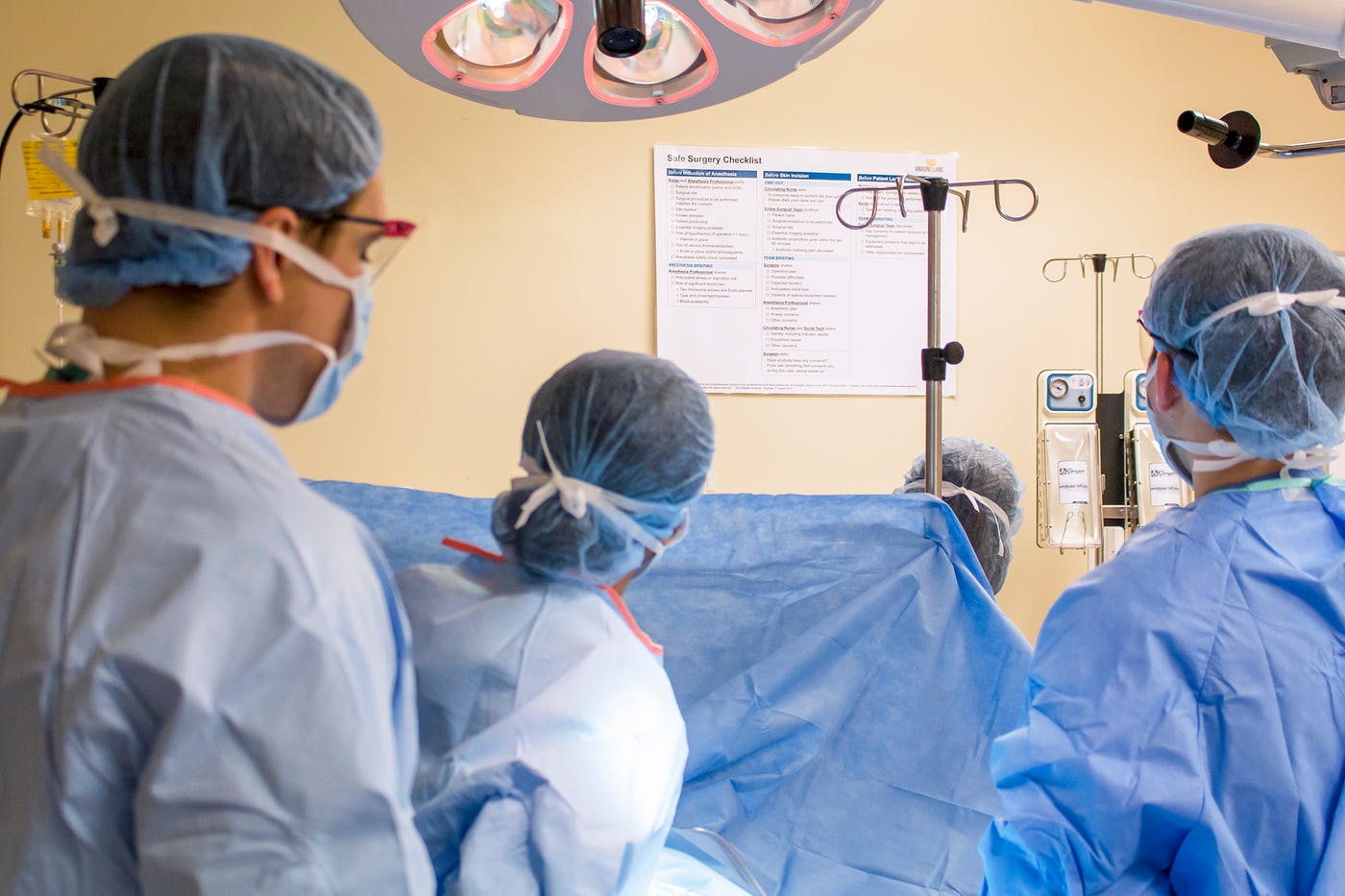By Anupama Murthy, MD; Mary Brindle, MD, MPH; Alex B. Haynes, MD, MPH; and George Molina, MD, MPH
Twelve years ago, the World Health Organization’s Surgical Safety Checklist was introduced in a publication in The New England Journal of Medicine, sparking a worldwide movement to improve the culture of surgical safety. A major study in Scotland subsequently indicated that the use of a checklist significantly improved outcomes after surgery.
Not all studies, however, paint such a positive picture. A study in Ontario, Canada, found that implementation of the Surgical Safety Checklist was not associated with significant improvements in surgical outcomes. Moreover, its impact fluctuates among high and low-resource settings.
What explains these differences? Answering this question may help us identify effective Checklist implementation strategies and pinpoint how the Checklist can have a more effective impact on surgical outcomes, particularly in low-resource settings. We explore examples of how the Checklist has been modified and implemented in different settings, analyze what led to successes and failures, and offer recommendations on how it can be more effectively implemented.
History of the Checklist
The WHO Surgical Safety Checklist, a 19-item list of prompts divided into three critical pause points, was created to prevent “never-events” (mistakes that should never happen in surgery), to promote safe administration of anesthesia, reduce surgical site infections, and improve teamwork and communication in the operating room. A decade after its launch, facilities in 70% of the world’s countries attested to using the Checklist, according to the report “Checking in on the Checklist,” released in January 2020.
Yet the Checklist is not routinely used in many operating rooms, particularly in low-resource settings. In 2016, the GlobalSurg Collaborative reported that countries with a low human development index had a mean unadjusted rate of checklist use of 35.9% compared to 64.6%, 91.2%, and 88.5% for countries with a medium, high, or very high human development index, respectively.

Furthermore, often when it is used, compliance and fidelity, and specifically to all of the Checklist components, are variable and frequently low. Therefore, effective implementation should not only center on making sure the Checklist is being used, but that it is being used with a focus on compliance with process measures and conversation prompts that are included.
The Checklist is not meant to be a rigid document; rather it is encouraged that systems adapt it according to their needs. Even the process of adapting the Checklist allows health care providers to recognize and potentially address the obstacles to safe surgery that are unique to that hospital system. Adaption, however, can produce challenges. For example, it can become considerably longer even to the point of being burdensome to the teams using it. A study of 155 checklists found that while several items from the original WHO Checklist were removed, most of the checklists grew in length.
More troubling, is how many systems removed checklist sections related to teamwork and communication. This finding is unfortunate since these “conversation prompts” may provide the greatest value of the Checklist in improving team function and culture of safety.
Effective Ways to Implement the Checklist
Effective implementation should not only center on making sure the Checklist is being used, but that it is being used effectively. For example:
- Checklist implementation programs should engage all stakeholders including not just the checklist users but also hospital leadership.
- Local Checklist champions can play a key role.
- Early in the pilot period, infrastructure or resource barriers to adoption should be identified; this is particularly important in low- and middle-income countries.
- Customize the Checklist to fit local context, culture, workflow, and needs. A non-tailored checklist may not reflect the local context and needs. Do this before a larger rollout is undertaken.
- Use a multidisciplinary training approach.
- Include regular feedback after implementation.
Even with attention to these processes, a lack of resources may pose barriers. A 2014 study in the Democratic Republic of Congo found that participants in the operating rooms or recovery rooms lacked pulse oximeters, a critical requirement for surgical safety emphasized in the Checklist; and nurses did not have training in how to count needles, surgical instruments, and sponges. Lack of essential technology and baseline training in quality and safety measures in the operating room may complicate effective implementation of the Checklist.
Mandated Versus Voluntary Checklists
While some Checklist adopters have opted for a voluntary implementation approach, others have used mandates and have tied reimbursement to compliance. A study in Ontario, Canada, in 2010 of systems where the Checklist was mandated found little evidence that these hospitals engaged in a robust implementation strategy that included tailoring the Checklist for the needs of their institution. Rather 90% just used the unaltered WHO Checklist or the Canadian Patient Institute version. Despite hospitals reporting high rates of Checklist compliance the mandate was not associated with reductions in adjusted operative mortality, surgical complications, postoperative emergency department visits, or postoperative hospital readmissions 30 days after discharge.
By contrast a study of voluntary Checklist implementation in South Carolina found that after implementation of the Checklist, the 14 out of 58 hospitals involved were associated with a 21.9% relative reduction in postoperative mortality compared to the ones that did not. Although these 14 hospitals only represented 24.1% of the hospitals included in the study, they performed about 40% of the operations included in the pre- and post-implementation analysis.
Thus, a quality improvement program mandated by regulatory authorities might not have the same grassroots buy-in and support as a program that is led and implemented by front-line healthcare providers who have support from leadership.
Best Strategy for Implementation
Implementation must be a dedicated strategy with buy-in and support from an institution’s clinicians and stakeholders, highlighting their readiness to commit to patient safety. Implementation is most effective when it involves local checklist champions, checklist customization and/or adaptation to meet local needs and workflow, and team trainings and simulations before a larger rollout is undertaken. A dedicated training period can build a sense of community and promote sustainable compliance with the checklist.
Through a comprehensive and flexible implementation model, the promise of the Surgical Safety Checklist can be achieved, leading to better outcomes for surgery patients in all socioeconomic strata and geographic locations.
Now, 12 years after the introduction of the Surgical Safety Checklist, it is essential that we focus on effective implementation strategies that strengthen how teams use the Checklist.
Mary Brindle, MD, MPH, a pediatric surgeon and health systems researcher, is the Director of the Safe Surgery Safe Systems Program at Ariadne Labs.
Alex B. Haynes, MD, MPH, is Associate Professor and Associate Chair for Investigation and Discovery at the Department of Surgery and Perioperative Care, Dell Medical School / University of Texas at Austin.
George Molina, MD, MPH, Core Faculty for Safe Surgery/Safe Systems at Ariadne Labs and a surgeon at the Department of Surgery at Brigham and Women’s Hospital in the Division of Surgical Oncology.
Anupama Murthy, MD, is a general surgery resident at Montefiore Medical Center / Albert Einstein College of Medicine in New York.



